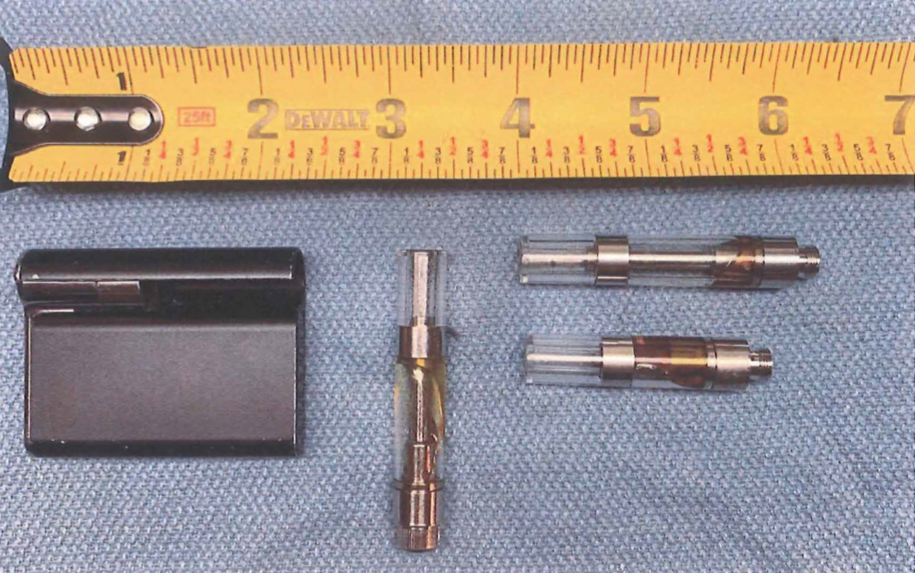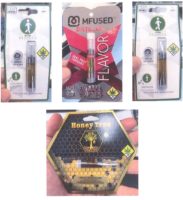Flower continues to be the dominant product category in US cannabis sales. In this “Flower-Side Chats” series of articles, Aaron Green interviews integrated cannabis companies and flower brands that are bringing unique business models to the industry. Particular attention is focused on how these businesses navigate a rapidly changing landscape of regulatory, supply chain and consumer demand.
TILT Holdings (NEO: TILT) is a publicly traded cannabis company with business divisions including Jupiter Research, distributor of CCELL in the US, as well as cannabis operations Commonwealth Alternative Care in Massachusetts and Standard Farms in Pennsylvania and Ohio. Unlike many publicly traded companies, TILT has focused their business on B2B sales staying away from retail operations. TILT recently announced a partnership for vertical cannabis operations with the Shinnecock Nation on Long Island, New York called Little Beach Harvest.
We interviewed Gary Santo, CEO of TILT Holdings. Prior to joining TILT, Gary worked at Columbia Care where he was the vice president of investor relations. Gary has a background in finance with several startup companies.
Aaron Green: How did you get involved in the cannabis industry?
Gary Santo: My career started about 26 years ago in finance at a startup. It was a financial services intermediary startup company where we did a lot of B2B work. From there, I branched out and continued to work with what I consider to be startup companies and companies going through a massive transformation. What’s been interesting is no matter whether that industry is finance, or whether it was gaming and leisure – where I was doing casino equipment – or whether it was life sciences, there were all so many common threads to how those businesses work. They were all complex and all had stories that needed to be told.

I looked at cannabis around 2017 or 2018. A friend of mine said, “you should really look at this space, because this could be a great way to cap off your career. It’s an emerging space. It’s a story space. It’s a space that’s just looking for some level of normal operational competency.” So, I was lucky enough to find Columbia Care. I joined them back in 2019 and helped take them public. They were the first cannabis company I had seen that was focused on being pragmatic and operational, not flashy, like so many of the companies that went public. They showed me that there is a way and a path in cannabis, that can be pragmatic, that can be operational, and where certain business rules do in fact, apply.
In July of last year, in the middle of COVID, I joined TILT, because I saw an opportunity to have that rebirth story, that complete turnaround story. It’s a B2B story that fits almost every part of my career up to this point.
Green: You have business units within TILT that span a diverse array from cultivation to manufacturing and technology. How do you see the business units of TILT working together in synergy?
Santo: That was the first question that was posed when I joined. We had three divisions at the time. We had our technology and accessories division with Jupiter that focused on inhalation. This includes the power packs, the cartridges, all the packaging that goes into that and also packaging for cannabis in general, not just for vapes. We had the software and services division in Blackbird which also does a bit of distribution in California and Nevada. Then we had our plant-touching side with vertical operations on the East Coast.
We quickly figured out that the software and services were not a place where we had good line of sight. That market is very competitive and irrationally priced. So, we leaned into the other two parts of the business which were profitable. TILT went through a rebirth when it went public with the same kind of wide mandate in 2018 that a lot of companies had back then. They had acquired some interesting assets. Jupiter has been profitable since day one. On the plant-touching side, we have assets in Massachusetts and Pennsylvania, that are in underserved, limited-license and supply-constrained markets, and those were profitable as well.
The way they work together is if you think about Jupiter’s business model, they are a distributor of the CCELL vaping technology. It’s a ceramics-centered cart. They were instrumental. The founder of Jupiter, who’s the chair of our board, Mark Scatterday, really helped the Chinese factory, Smoore, who owns CCELL and the patents on CCELL, to develop that technology from their use in the tobacco space, which is where it had been for quite some time, and bring it into the cannabis space.
 Jupiter has always had a forefront position as a distributor. We have our own R&D shop, but the way we sell there is B2B. We will sell vape cartridges and power packs either as stock items with Jupiter and CCELL logos or on a customized basis. If there’s a bespoke mouthpiece or something we can take one of our existing designs, white label it and put different badging or color combinations.
Jupiter has always had a forefront position as a distributor. We have our own R&D shop, but the way we sell there is B2B. We will sell vape cartridges and power packs either as stock items with Jupiter and CCELL logos or on a customized basis. If there’s a bespoke mouthpiece or something we can take one of our existing designs, white label it and put different badging or color combinations.
The CCELL business grew to over 700 customers, including MSOs, LPs, brands, and in about 36 different states and in 15 countries. As we looked at how best to lean into our plant-touching assets coming into 2021, the question was, could you replicate that where you own more of the supply chain? The issue with being a distributor is if you don’t own enough of the supply chains, the margins aren’t quite as eye-popping as they are in the plant-touching side. So, we’ve built a robust wholesale business, selling into about 90% of the retail stores in Pennsylvania from our manufacturing and distribution facility, and selling into about 50 or 60% of the retail stores in Massachusetts from our operations. We thought that created a strong window for us to do the same exact thing: offer up our facilities to create product whether it be on a bespoke basis with one of our brands, or a white-label basis, or straight-up contract manufacturing. We then leverage that distribution network, and that’s where the pieces all started to fit together.
We started this year with probably about 15-20% of our revenue was coming from people who were customers of both plant-touching and non-plant-touching businesses. We’re up to over 30% now and really, we just started leaning into the strategy in the start of 2021.
Green: In Q2 TILT showed continued growth in revenues and EBITDA with the Q3 report recently released. Where are you seeing growth in revenues right now? What’s got you excited?
Santo: With Jupiter, it’s been great to watch the vape industry come back. I think you could not have thrown much more at the vaping industry than what was thrown out there in late 2019, with the vape crisis rolling right into a respiratory pandemic. I think what we saw there was consumer demand remains strong. For every percentage point vaping was down, smokable flower is up. So, inhalation is clearly the absorption method of choice.
Obviously, the utility and the convenience of the vape was less important to people working from home. You can now smoke a pre-roll, whereas you’d never do that in your office setting. You might go outside and take a quick draw on a vape and then go back to work. That’s one of the reasons we saw a little bit of choppiness in 2020. We started to see that that business come back towards the end of the year with a lot more consistent ordering, and this year, it’s gone into full throttle. All-in-ones – the disposables – have returned to ordering so that means more power packs and more cartridges. It’s been a pleasant return to normalcy.
 Now, I think Jupiter has been outpacing the broader vaping market in terms of year-over-year growth. That’s exciting granted the margin profile is certainly not as eye-popping as the plant-touching businesses. With Jupiter, we’re talking mid 20%’s on gross margin and low-to-mid teens on EBITDA.
Now, I think Jupiter has been outpacing the broader vaping market in terms of year-over-year growth. That’s exciting granted the margin profile is certainly not as eye-popping as the plant-touching businesses. With Jupiter, we’re talking mid 20%’s on gross margin and low-to-mid teens on EBITDA.
Plant-touching aspects are where we’re super excited. These are facilities that a little over a year ago, prior management was thinking of selling off mostly because they thought there was tremendous value there. And it made sense. When I joined the firm, one of my first jobs was to look at a strategic view of the entire company and break down each of the business units. It became very clear that Massachusetts, Pennsylvania, and recently Ohio, we’re going to be the significant growth engines for us, but not necessarily in retail.
A lot of the MSOs go and play in several stores and focus on sales per square foot. We are leveraging that B2B wholesale strategy. That’s exciting to us and the approach that we’re taking. It’s not about selling bulk flower. It’s not about selling just our own brands. It’s about really partnering with brands that are going to be coming from West to East. Whether it’s California, Washington State, or Colorado, brands that have managed to stake out a claim in the most hyper-competitive spaces in a race to the bottom market in terms of pricing, have held their price point and held their ground. We think they play exceptionally well here on the East Coast where we’re just getting started. The East coast is nowhere near the depth of market that you see over in California.
What we offer, what makes it exciting, is that we’re not trying to buy those brands. We think brands are where this industry is going. But we don’t know which brands are going to win any more than anyone else does. We know it’s expensive to own a brand and it’s hard to keep a brand fresh. So, we’re doing partnerships and those partnerships are literally on a SKU-by-SKU basis. In some cases, it’s a straight licensing deal, and in other cases, we share the gross profit. Brands come in, like Old Pal, for example, and we’re able to educate them on how different it is to sell their ready-to-roll pack in Massachusetts compared to what they do in California from the packaging to the formulation, and what can be on the labels, all those kinds of things. It’s been eye-opening.
The feedback has been better than I would have ever expected. I knew we would land a few brands. I wouldn’t have thought we would have already signed four brands on something we just announced strategically in January. We had MJ BizCon, where we were getting hit up all over the place with additional brands. I think between that, and then the work we’re doing in New York State, it shows that we’re differentiated and how we’re approaching this market. We’re in this to last, not to just squeeze every last basis point and ride the wave into the shore. We want to still be out here playing in the ocean in any market, whether it be this market, the legalized market, or whatever the market throws at us.
Green: When you are partnering with brands, what does that look like?
Santo: It depends on the jurisdiction. In Pennsylvania, you can’t really do pre-rolls there. You can’t sell the ready-to-roll pack that comes with a lighter. I can sell the pouch with flower, but I can’t sell you rolling papers. I can’t sell you a lighter because you might “figure out how to put that all together and smoke a joint.”
Part of the issue is being able to marry what makes that brand, “the brand?” And how do we keep that brand fidelity when we know we have certain restrictions, whether it’s medical-only market in Pennsylvania, or THC levels in Ohio. That’s where we spend time working with the brands, helping to develop which SKUs they want to see hit the market first. Everybody says they want to be a number one brand in every market and it’s not realistic. You might carve out a niche if you want to be number one in a certain type of product. We work with brands to figure out where their niche is going to be.
Green: You recently announced a partnership with the Shinnecock Nation. How did you decide on a partnership with them? Why does it make sense? And can you talk to kind of the tribal aspect of it and how that differentiates you in the New York market?
Santo: We had been looking across the Northeast and want to build sort of some type of Northeast corridor for brands to come East because we think having that tri-state region right would be distribution most of these brands would love to have. We had been looking for ways to get into New York. It is incredibly expensive and incredibly difficult. We saw deals earlier this year. One was $75 million for the old MedMen assets and money has to be invested into building out the growth facility further.
My former shop, Columbia Care, spent about $45 million purchasing a bunch of greenhouse space on eastern Long Island. We thought the return on that kind of expense was just not there.
So, looking at how we look at brands and how we look at the market in general, we love partnerships where both sides are incentivized. An investor introduced us to Conor Green. They are a shop out of Chicago, and they had been advising a lot of different Native American tribes, including Shinnecock, on how to enter the cannabis space. We were very impressed when we met with the Shinnecock on how they were viewing cannabis. A lot of people want to just get in and ride that green wave I talked about and don’t fully understand how to translate the passion for the plant into a functional operating company. I was incredibly impressed by the thoughtful, pragmatic way the Shinnecock worked through setting up their cannabis control infrastructure on their sovereign grounds. They had their own standalone Cannabis Control Commission, setting up the regulations to mirror very closely what was going on in New York state where they are ready should that time come where wholesale can occur across sovereign state lines. They were really being thoughtful about what they were looking for in a partner.

We like the location out in eastern Long Island. The next closest dispensary is about 30 minutes away. It’s a great neighborhood with good access. We’re creating a vertical operation that has a large dispensary selling on the tribal grounds. The numbers look great. Once wholesale comes, and we do think wholesale will come to the state, the ability to reach all of New York State from that tribal ground is incredible. We have the ability to expand the facility if the demand is great. They’ve already approved adult-use on tribal grounds. Little Beach Harvest, which is the name of the Shinnecock enterprise we’ve partnered on, does have to go through the process of applying to the Shinnecock Cannabis Regulatory Division to get approval. But they’ve already got all the framework in place for both medical and adult-use. So, it gives us a chance to really get going strong in New York.
From a dollars and cents point of view, it only costs $700,000 to get in – about half in cash half in stock. If Conor Green hits their milestones and we get open when we think we can, there could be another two and a half million or so in stock. Every dollar we put in is now going towards building the facility, not towards just the right to build the facility.
We love this deal from a social equity standpoint. It’s unique. This is not a facility we will take over and own. At the end of the day, it is owned by the Shinnecock. They will be receiving 75% of the free cash flow. Our contract runs nine years and it’s got some automatic extensions if we hit certain milestones. If we decide to build bigger, that opens up the contract again. It’s a symbiotic relationship. We provide financing. We provide training. We provide the horsepower to help them scale. They provide the license. They provide the passion and the understanding of the plant, and really a great group of folks who are so interested in investing and seeing a true economic, sustainable engine out on that plot of land. We couldn’t be more excited.
Green: What trends are you following in the cannabis industry right now?
Santo: We are keeping our eyes on where the form factor is going. CPG is where we think the world is heading to at some point. I think in Massachusetts, it moves quicker. When you look at Pennsylvania, and as you watch these markets trying to transition from purely medical to medical and adult-use, we’re seeing some grinding of the gears. Some states did a great job. Pennsylvania is a little bit of a no man’s land where right now the legislature and the Department of Health are fighting with each other, saying one got ahead of the other. So, it’s hard to get new products approved. If you can’t get new products approved that migration towards adult-use becomes that much harder. You would want to broaden out the form factors. So, we are keeping an eye on what’s allowable in those states.
We are also keeping a strong eye on how we can expand further with additional partnerships, maybe in New Jersey, maybe in Connecticut, who knows? We must be responsible. Those deals take a while to find and a while to get done.
In the Northeast, there’s been a slowdown in cannabis sales. I think it’s too soon to know exactly what’s driving that. But it’s also an industry that’s going to normalize at some point from these explosive growth rates that have been reported for all these years. It was inevitable it was going to start to slow down. That’s what happens with mature industries.
Green: What in cannabis, or in your personal life are you most interested in learning about?
Santo: I think every day I find instances of new uses for the plant. I was not one who thought much about cannabis growing up. I was a bartender. I was kind of on a different side of the world. But cannabis is amazing. I first was introduced to use cases by my dad. He’s suffering from arthritis in his knees, and he had gotten a medical card. He was getting CBD and THC balms that he puts on his knees.
As I look deeper into the plant, it amazed me that if this was a plant that was discovered today, and nobody knew anything about it, you’d probably be buying it down the aisles of Whole Foods. It’d be in every drugstore. It’d probably be over-promoted at that point. But it’s got that long legacy of prohibition, and social inequity. So, it’s making it harder to adopt. Obviously, being Schedule 1 doesn’t help either.
I am excited to see more and more people start to incorporate it responsibly in their mainstream lives and really promote a lot of that counterculture. It really is no different than other ways that people use to manage stress and anxiety and manage pain. That’s what keeps me coming to work each day, frankly. No, we’re not saving lives necessarily. But at the end of the day, I think we really are improving them and giving people alternatives to opioids and benzos and things like that. So, I think as long as that keeps happening, I’ll still be here.
Green: Okay, great. That concludes the interview.
Santo: Thanks, Aaron.







